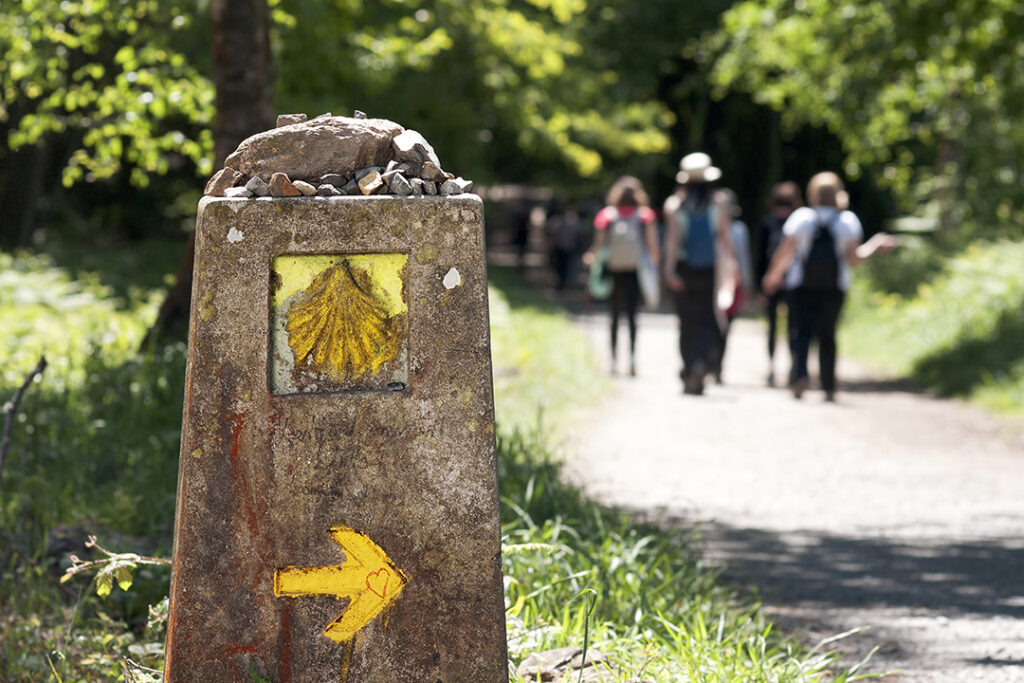Religious tourism in Europe: pilgrimage sites, sacred journeys, and cultural heritage
Religious tourism in Europe: pilgrimage sites, sacred journeys, and cultural heritage
Join millions on sacred journeys to Europe’s pilgrimage sites, where ancient traditions meet modern seekers in a quest for meaning.
Pilgrimage is one of the fastest growing movements in the world, with more than 330 million people going on pilgrimage every year.[1] In contemporary Europe, the renewed popularity of pilgrimage stands as a testament to the human pursuit of spiritual fulfilment despite prevailing currents of secularisation and declining religious observance.[2]
Reflecting on the Camino pilgrimage—a time-honoured Christian journey tracing its origins from France to the revered destination of Santiago de Compostela in north-western Spain—we witness a remarkable evolution. During the early 1980s, only a few thousand pilgrims trod its paths. However, by 2019, the annual tally had undergone a remarkable revival, attracting nearly 350,000 individuals to embark on this sacred journey.[3]
For writer and journalist Peter Stanford, the current trend represents a process of repurposing rather than resurrection. Regardless of whether their motivation stems from faith, a connection to nature, or a simple desire for cultural exploration, all modern-day pilgrims are immersed in a profound search for meaning. It is this fundamental quest for significance that lies at the core of pilgrimage, distinguishing it from conventional tourism.[4]
Modern pilgrims: motivations and perspectives
Pilgrimage routes have a unique characteristic: they are born from a deep religious calling, typically involving visits to sacred destinations or acts of penance. They can be seen as laying the groundwork for the modern phenomenon of tourism. However, as time has progressed, the motivations driving these journeys have undergone significant shifts. Today, alongside traditional religious pilgrimages, we observe the emergence of secular and spiritual pilgrimages.[5]
Professor Noga Collins-Kreiner from the University of Haifa suggests that pilgrimage is entering a phase of “rejuvenation,” wherein it transcends its solely religious roots and adopts new dimensions, particularly emphasising personal spirituality.[6]
Pilgrimage routes and destinations
One of Europe’s most significant pilgrimage routes is the Camino de Santiago.[7] It is not merely a singular path but rather a network of routes spanning across a vast region encompassing France, Spain, and Portugal. Its origins trace back to the 9th century when the tomb of the Apostle St. James was unearthed in Galicia, establishing it as one of the foremost pilgrimage routes of the Middle Ages.[8]
Another notable pilgrimage path, the Via Francigena,[9] spans 1,800 km from Canterbury to Rome, mirroring the journey undertaken by Archbishop Sigeric in 990 AD to meet Pope John XV and receive the pallium investiture. Since receiving recognition as a Cultural Itinerary from the Council of Europe in 1994, the Via Francigena route has experienced a steady growth in the number of pilgrims and walkers embarking on the journey. By 2015, this figure had reached 40,000 individuals per year.[10]
In the context of Europe, while pilgrimage sites with Christian origins often enjoy great renown and recognition, it is important to note that pilgrimage destinations do not have an exclusively Christian background. Furthermore, the rich and diverse tapestry of European pilgrimage sites also encompasses locations with different religious or secular origins.
The Hill of Tara stands as a prime example of a pilgrimage site with Pagan[11] origins. Situated in the Boyne Valley within County Meath, Ireland, this site holds profound religious and civic significance in Pagan Ireland. Renowned for its rich history and ancient monuments, the Hill of Tara has been a focal point of religious, cultural, and political activity for over 5,000 years. Today, it remains a popular destination for tourists and scholars intrigued by Irish history and culture.[12]
Interfaith dialogue and shared pilgrimage
Exploring the rich tapestry of European pilgrimage routes reveals diverse themes and networks, from historical to religious and environmental. Within this context, interfaith dialogue and shared pilgrimage experiences hold significant importance, reflecting the dynamic cultural landscape of Europe.
Embedded within the diverse fabric of European pilgrimage routes, the European Cultural Routes program was established in 1987 by the Council of Europe, coinciding with the Declaration of Santiago de Compostela.[13] Among its inaugural recognitions was the ‘Ways of Pilgrimage to Santiago de Compostela’, symbolising a profound nexus of historical, religious, and environmental themes. This route, annually traversed by tens of thousands of pilgrims, serves as a focal point for interfaith dialogue and shared pilgrimage experiences, embodying the dynamic cultural landscape of Europe.[14]
Emerging networks are being established along either new or existing paths, encompassing a variety of themes including religious, historical, and awareness-raising routes. Examples range from religious networks like the sites associated with St. Michael[15] across Europe, to historical paths such as the Wool and Silk Road,[16] as well as awareness-raising trails like the Way of the Transformed Lands.[17]
Through her research, anthropologist and professor Catrien Notermans has encountered instances of non-believing tourists lighting candles for saints, Muslims extending invitations to Christian pilgrims to dine in their mosques, and women bringing their menstrual blood to a Catholic altar in a cave. These are examples of a growing trend in contemporary European pilgrimage, marked by interfaith dialogue and shared pilgrimage.[18]
Another interesting topic is the rise of green pilgrimage. The European Green Pilgrimage Network (EGPN)[19] started from the Green Pilgrimage Network, a global group of pilgrim cities committed to eco-friendly pilgrimage. Its goal is to reduce the environmental impact of pilgrimage and to encourage environmental care as a religious duty. Its website provides guidance on several essential aspects to consider when incorporating eco-friendly practices into a pilgrimage city, place, or route. The network includes pilgrimage sites and religious groups across Europe, from Canterbury in the United Kingdom to Vadstena in Sweden, and from Trondheim in Norway to Etchmiadzin in Armenia.
As pilgrimage experiences a revitalisation, it welcomes new dimensions and motivations, leading to a rise in interfaith dialogue and shared pilgrimage endeavours. This trend promotes understanding and unity among various religious and cultural groups. Additionally, initiatives like the European Green Pilgrimage Network underscore the growing acknowledgement of environmental sustainability within pilgrimage practices, enhancing the spiritual journey for modern-day pilgrims.
Learn more about religion and society on the EARS Dashboard
Sources
[1] European Green Pilgrimage Network
[2] Gender, Nation and Religion in European Pilgrimage
[3] Secular pilgrims: why ancient trails still pack a spiritual punch
[4] Ibidem
[5]The rejuvenation of European pilgrimage routes
[6]The rejuvenation of European pilgrimage routes
[8] The rejuvenation of European pilgrimage routes
[10] The rejuvenation of European pilgrimage routes
[11] Paganism in Europe: A contemporary revival unveiled
[13] The rejuvenation of European pilgrimage routes
[14] The Cultural Routes of the Council of Europe
[15] Itinéraire Européen Saint-Michel
[16] Via della Lana e della Seta
[17] Il Cammino nelle Terre Mutate






